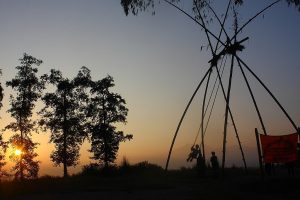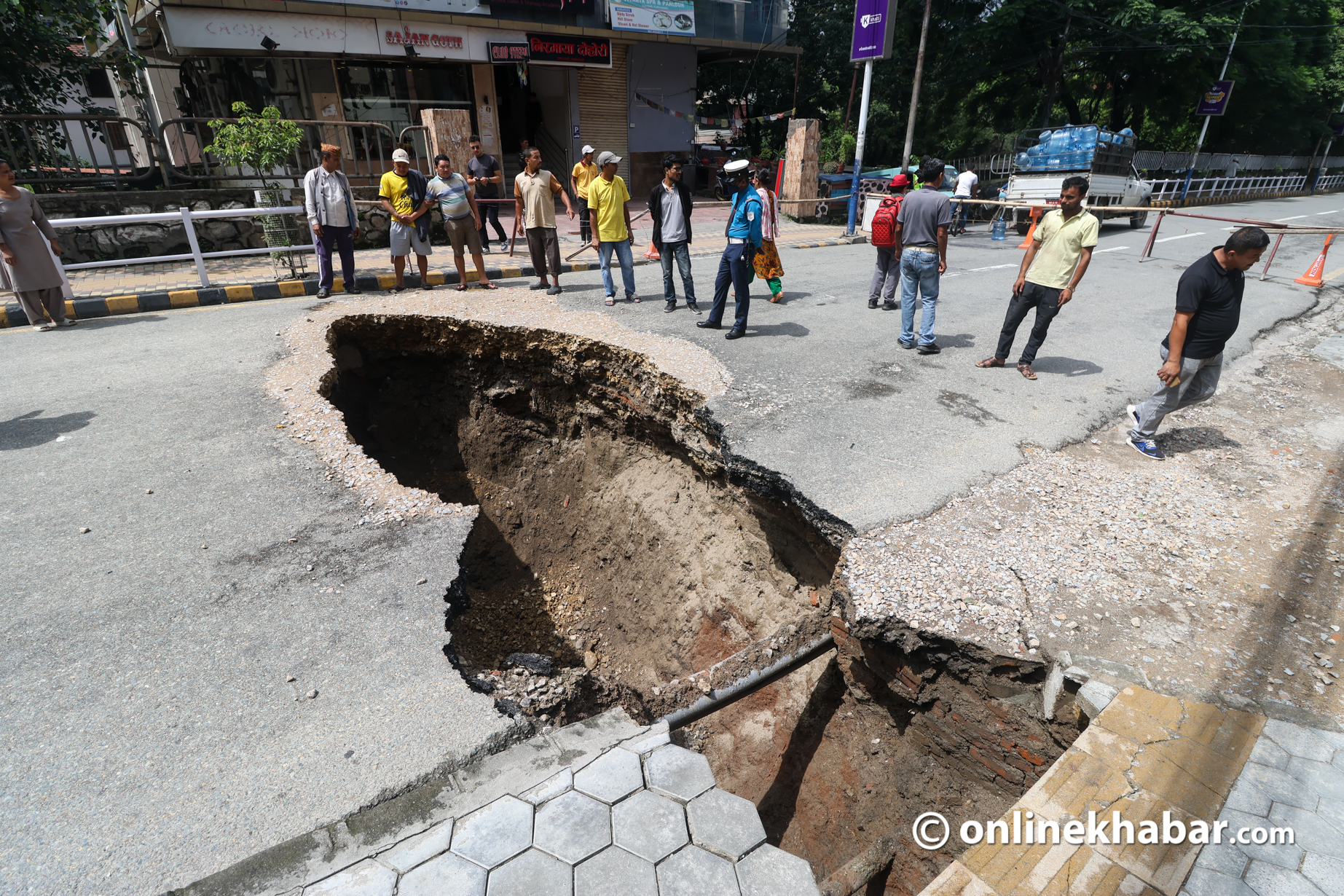
A closer look at three Durbar Squares within the Kathmandu valley reveals a living art from the Lichhavi period, attracting countless tourists. Wooden sculptures, tundals (roof brackets), and stone carvings are some of the most fascinating works of art found in the valley.
While the rulers of the medieval age are credit for the tangible heritage and remembered for centuries, the artists who design them are only remembered during their generation. Yet, they have different stories to tell.
When one goes to an ancient temple, they can see carvings related to sexuality and intimacy on all four sides of the temple and might wonder how such art is carved on a tundal and how a sculptor creates such art. An answer to this question can be found after visiting the Nasah Art Gallery in front of the Nasah Temple in Bhaktapur, which has a collection of paintings of wood and stone sculptures carved for three decades.
The artist of the centre is Rajendra Shrestha. He has been fascinated with art since he reached the 10th grade of school and has worked to revive the endangered heritage since. His father was into dancing while Rajendra was into painting. At home, he was free to pursue a career of his choice.
Lost treasures made alive

A temple at Mohalapur in Rautahat was excavated by a team led by senior archaeologist Tara Nanda Mishra. Later, the researchers confirmed this temple as an ancient one. An artist was needed to draw the architecture of the temple. There was no one who could explain the structure of the temple. Later, Shrestha painted the temple on the basis of ancient stories and materials obtained. The temple is now built in the same form he designed.
Similarly, no one was there to tell how the structure of the Bhaideval Temple in Patan Durbar Square was. Works of literature mentioned that the temple was three-storey. Based on that, Shrestha painted a picture of the temple. Accordingly, the construction of the temple is underway.
The Bhasmeshwar Mahadev Temple in Lalitpur is also being reconstructued on the basis of Shrestha’s painting. He painted the designs according to a master plan of Patan Durbar Square. He says that a lot of work has been done to prepare the design of not only the lost temples but also the dilapidated ones.
The rebuilt Laxminarayan Temple behind Kalbhairav at Hanuman Dhoka was based on a newer style. Based on the old photo, Shrestha redesigned the temple to be reconstructed in the old style.

Similarly, a new design has been prepared for the reconstruction of Tripureshwor Temple in Kathmandu, destroyed due to the 2015 earthquake. After the engineer prepared the surface design, Shrestha was given the responsibility of drawing the map of the temple. He has also prepared a pictorial structure in the design of the temple area.
Art for life
One might wonder how one might sustain their life by doing art. Many would ask Shrestha; he would reply to each of them modestly. People now come to ask about his experiences. “I have built this house by selling my art after the earthquake,” he says, pointing towards his five-storey house in Bhaktapur.”
Shrestha informs he charges different prices for the same art for different people depending on their purchasing power and interest. Common people often find handmade paintings relatively expensive. But, Shrestha argues, in general, an artwork’s price cannot be considered expensive when one considers the painter’s labour.

It takes three to four days to make a painting of a temple or a temple complex. He has been charging from Rs 2,500 to Rs 50,000 depending on the art and subject matter. When foreign tourists come, he quotes the price accordingly.
Inspiration from Shukra Sagar
Years ago, in the course of painting, Shrestha met archaeologist Shukra Sagar Shrestha. Until then, Rajendra had no knowledge of archaeology. Once he got a chance to work with a person like Shukra sagar Shrestha, he was inspired to draw a picture of archaeological heritage.
The archaeologist suggested he prepare a book by depicting the tundals in different temples. Later, they agreed that one would make paintings whereas the other would write captions.
He started work as per the suggestion. But while the work was going on, Shukra Sagar Shrestha passed away. “There was no one who could write captions like him,” Rajendra says, “That is why the book project has been left in the lurch.”

40-year-long journey
The word ‘Nasah’ from the name of Nrityeshwar Temple refers to ‘respectable people’. He started painting in the late 1970s. An artistic mural can be seen on the back wall of the Dattatraya Temple. That picture was made by Rajendra Shrestha in the mid-1980s.
At that time, he was trained in painting at Araniko Art Centre in Bhaktapur with other 14 people with him, but now only two of them have been contributing to the field through painting.
Shrestha says he became more enthusiastic in professional painting after many people liked Dattatraya’s painting. Earlier, he had opened ‘Laiku Art Gallery’ with his friends.
His painting of heritage belongs to a different genre from landscape and portrait works. Nevertheless, he has shown talent in landscape and portrait paintings also.

Photos: Aryan Dhimal
























